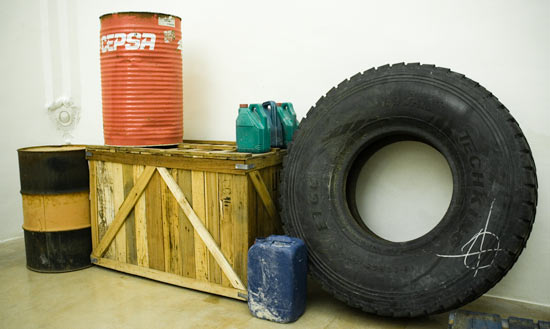In 2012 the art journal Triple Canopy published a treatise on IAE (International Art English) written by Alix Rule and David Levine. We are told the international art world relies on a unique language. And by the art world, what is meant is not just artists and curators, but gallery owners and directors, bloggers, magazine editors and writers, publicists, collectors, advisers, interns, art-history professors, and so on. The growth in IAE in recent times seems to be inextricably linked to the Internet and the biennale as artists, gallerists and others strive to reach an international audience.
And this brings me to e-flux, described by Rule and Levine as the art world’s flagship digital institution. “Essentially, e-flux is a listserv that sends out three announcements per day about contemporary art events world-wide.” Unlike similar services, e-flux is curated. And because e-flux press releases are implicitly addressed to the art world’s most important figures, they are written exclusively in IAE. Rule and Levine collated thousands of exhibition announcements published since 1999 by e-flux and then used some language-analysing software called ‘sketch engine’ to discover what, if anything, “lay behind IAE's great clouds of verbiage.” In 2012, e-flux had twice as many subscribers as Artforum.
Rule and Levine break down their analysis of IAE under several headings;
VOCABULARY
Apparently, IAE is critical of English for its lack of nouns, so visual becomes visuality, global becomes globality, potential becomes potentiality and experience becomes experiencability. Space is a word whose meaning has been transformed by IAE. An announcement for the 2010 exhibition “Jimmie Durham and His Metonymic Banquet,” in Spain, (pictured) had the artist “questioning the division between inside and outside in the Western sacred space”—the venue was a former church—“to highlight what is excluded in order to invest the sanctum with its spatial purity. Pieces of cement, wire, refrigerators, barrels, bits of glass and residues of ‘the sacred,’ speak of the space of the exhibition hall … transforming it into a kind of ‘temple of confusion.’”
Prefixes like para-, proto-, post-, and hyper- are particularly popular in IAE because they “expand the lexicon exponentially, which is to say without adding any new words.” Words such as reality seem to be given non-specific meanings in IAE. One exhibit invites “the public to experience the perception of colour, special orientation and other forms of engagement with reality.”
SYNTAX
IAE loves adverbial phrases such as “radically questioned” and double adverbial terms such as “playfully and subversively invert.” IAE recommends using more words than are necessary. An example is “when Olafur Eliasson’s ‘Yellew Fog’ is shown at dusk—the transition period between day and night—it represents and comments on the subtle changes in the day’s rhythm.” IAE also groups unrelated terms “her signature combination of skill and awkwardness.”
IAE also loves lists “forms of practice, techniques, formats and aesthetics … not dissimilar to the functions of the concepts of the filmic or the literary that entail activities such as organization, compilation, display, presentation, mediation or publication ….”. I’ve also encountered the extravagant use of lists in job descriptions.
GENESIS
Rule and Devine end up asking how, when we write about art, did we end up writing in a way that sounds like inexpertly translated French? They argue the origins can be traced back to an art journal called October founded in New York in 1976, whose editors sought a more rigorous interpretive criteria for art criticism than was common at that time . They looked to the French post-structualist philosophers for inspiration. They quote expressions such as “the political," “the space of absence,” “the recognizable and the repulsive”. IAE’s role in a much expanded art world was to consecrate certain artworks as significant, critical, and most importantly, contemporary.
They argue the use of IAE is all about power, and it’s about trying to gain insider status in the fiercely competitively art world. In other words, IAE has made it harder for non-professionals. And they suggest a more cynical aspect to IAE; it’s showy vagueness can also be commercially pragmatic: "The more you can muddy the waters around the meaning of a work," says Levine, "the more you can keep the value high."
Rule and Levine are cautious about IAE's precise effect on artists; they haven't researched it. But Rule does say: "It would be naive to say artists are not influenced."
They are not so sure about the future of IAE. Given the competence in it is so universal among art professionals, it’s losing its allure as an exclusive private language. But rest assured, if IAE does wither on the vine, a new form of art gibberish will surface in the near future.
SOURCE; “International Art English” - Rule and Levine, Triple Canopy
“A Users Guide To Art Speak” - The Guardian, Jan 2013
